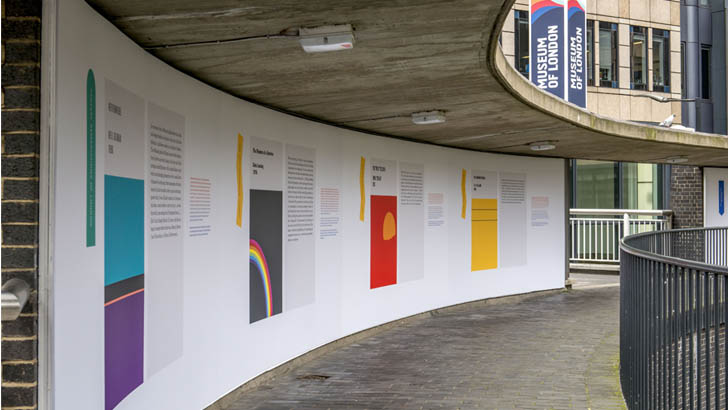Imagined Futures
As part of an ongoing public engagement project on "Communicating the relevance of speculative fiction to different publics" I've been working on between 2017 – 2018, I was really pleased to be awarded Birkbeck Public Engagement RCUK funding to make a short film.
The film features the "Imagined Futures" display I curated for the Museum of London, which was installed at the Rotunda Terrace from 21 October 2017 to 22 April 2018 and featured as part of the Museum's year-long "City Now: City Future" programme of events.
Other work on this project has included contributions to BBC Radio 4's "Mars Season" in March 2017 and an interview with Margaret Atwood on "Science, Fiction and the Future" for the New Scientist Live Festival at ExCeL London in October 2017.
WATCH THE FILM HERE:
The display featured work by the following writers: Mary Shelley, H. G. Wells, Richard Jefferies, George Orwell, John Wyndham, Anthony Burgess, J. G. Ballard, Emma Tennant, Doris Lessing, Neil Gaiman, J. K. Rowling, China Miéville, Maggie Gee, Bernardine Evaristo and Julie Myerson.
Here's the blurb:
Of all cities, London is one of the most widely represented in literature. During the 19th century, when it rose to prominence as the centre of the British Empire, London was considered the peak of civilisation. However, this achievement was matched by the violence of a colonial system that damaged the places and peoples from which the city drew its vast wealth, in India, Africa and the Caribbean.
London therefore made the ideal setting in which to imagine future visions – in books that destroy the metropolis through scenes of devastation, or rebuild it as a fairer society. From Mary Shelley’s disaster novel, The Last Man (1826), to H. G. Wells’s techno-utopian vision in The Sleeper Awakes (1899), London established its reputation as a city in which to enact different visions of the future in literature.
In the 20th century, such imagined futures became increasingly bleak, particularly in the post-World War II period, and by the 1970s writers were experimenting with surreal future London landscapes. More recently, London has become home to the leading characters in influential books for younger readers, such as J. K. Rowling’s Harry Potter series and Neil Gaiman’s Neverwhere (1996). In the 21st century, as we come to terms with the environmental impact of climate change, the city has once again found a new role as a literary setting.
Please click here to view the display content or preview below.







 Dr Caroline Edwards is Senior Lecturer in Modern & Contemporary Literature at Birkbeck, University of London. Her research and teaching specialisms are in 21st century literature and critical theory, science fiction and post-apocalyptic narratives, Marxist aesthetics, and utopianism.
Dr Caroline Edwards is Senior Lecturer in Modern & Contemporary Literature at Birkbeck, University of London. Her research and teaching specialisms are in 21st century literature and critical theory, science fiction and post-apocalyptic narratives, Marxist aesthetics, and utopianism.
Follow / Contact